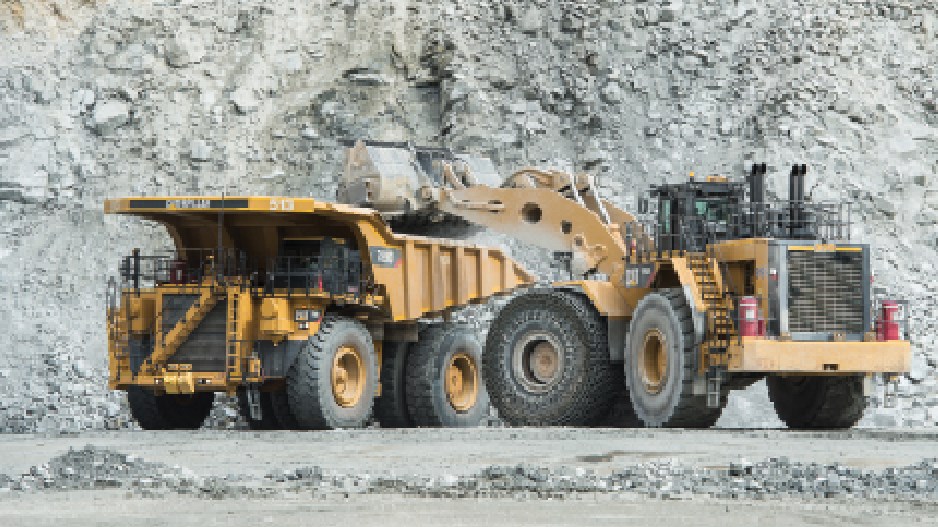In 2013's latter two quarters, BHP Billiton (NYSE:BHP) made a cumulative profit of approximately US$8.1 billion.
With projects being developed around the globe, it mines numerous natural resources and employs more than 120,000 people, including contractors.
Vancouver-based Capstone Mining Corp. (TSX:CS) is almost the polar opposite. The small base metals company has a few projects, all in the Americas, and employs fewer than 2,000 people.
But that hasn't stopped the two from doing business.
In April 2013, Capstone and BHP completed a $660 million deal for BHP's wholly owned Pinto Valley copper mine in Arizona. BHP, like many other large producing companies, was looking to drop assets amid a downturn in commodity prices.
Capstone, on the other hand, had about $500 million on its balance sheet, money it originally intended to invest in its Santo Domingo project, an undeveloped copper property in northern Chile. But with that country in the midst of a power supply crisis, Capstone was in the market to buy elsewhere.
It found Pinto Valley.
"We wanted to put that money that we had back to work in copper, and we were specifically looking at producing assets," Cindy Burnett, Capstone's vice-president of investor relations and communications, told Business in Vancouver.
"So this opportunity came up, as did some others."
She said there were several rounds of competitive bidding. Over the course of a year, Capstone did its due diligence, as did BHP.
Executives from both companies met several times to discuss the acquisition, and reps from BHP visited Capstone's Cozamin mine in Mexico.
Burnett said BHP wanted to see the operating team at Cozamin and examine Capstone's environmental and safety records.
"The interesting thing is we're not certain we were necessarily the highest price bidder, but we are a small company and not necessarily that well known. The big challenge for us was getting BHP to understand that we were an operating company with a significant track record. Because they look at not only the dollars but also the reputational risk of a company taking the property and then operating it properly."
Since the deal closed, Capstone has more than doubled its copper production. Prior to the Pinto Valley acquisition, Capstone was producing about 85 million pounds of copper per year. That total is now more than 200 million.
More copper produced means more revenue and a bigger spotlight. Global investors are now taking a look, said Burnett.
But aside from the higher profile Pinto Valley brought the company, Burnett said Capstone's takeaway has been personal.
"Many of us, individually, had worked for much larger companies and done transactions of this size or larger, but collectively as a team we had not. For us internally this showed we really do have a core competency – this was something we did very well as a group."
But not all notable B.C. resource industry acquisitions last year resulted from large companies looking to shed their properties.
For New Gold Inc. (TSX:NGD), 2013 provided the opposite scenario: it produced the right investment climate for a mid-tier gold producer to acquire a sagging junior company with an attractive, advanced development project.
In October, New Gold completed its purchase of Rainy River Resources for $310 million. As part of the deal, New Gold acquired Rainy River's flagship project, also dubbed Rainy River, a large gold deposit in northwest Ontario.
According to a New Gold feasibility study released last January, the Rainy River project will produce 325,000 ounces of gold per year for the first nine years of the mine. Initial production is expected to begin in late 2016.
Hannes Portmann, New Gold's vice-president of corporate development, said the company had been following the Rainy River asset "for some time" prior to the acquisition. But it wasn't until the market slowed and raising equity became difficult for many juniors that an opportunity to buy the project for a good price arose.
"You had this company Rainy River go from having a market capitalization in excess of $1 billion back in 2011 when everybody was busy doing acquiring. Fortunately for us they weren't acquired back then because it would have been a lost opportunity for us," said Portmann.
"In the intervening two years they spent about $100 million advancing their project, completed a feasibility study, advanced the permitting and then in 2013 when everybody else was on the sidelines we were able to step forward and acquire it."




